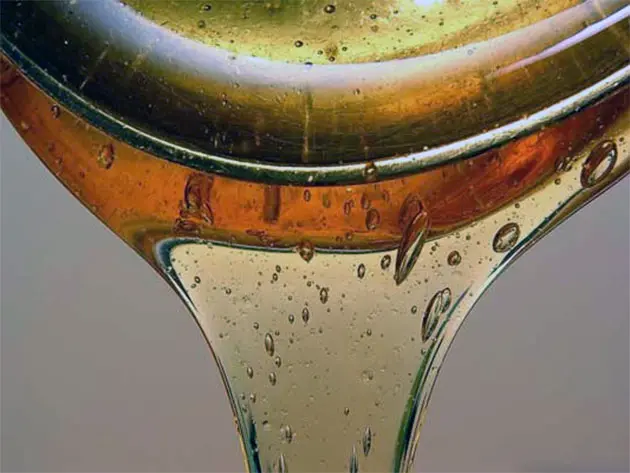Honey captures the fresh aromas of spring and the warmth of summer. Its flavor was recognized long before sugar became popular. The great Avicenna recommended it to those who wished to live a long, vigorous life, suggesting it as a remedy for insomnia. Hippocrates, the father of medicine, believed that honey drinks could soothe a cough. Ancient Slavic medical texts are filled with recipes for honey-based remedies used for better wound healing, colds, and rheumatism.
Nature seems to have intentionally packed this product with over seventy valuable and essential nutrients for life. It contains grape and fruit sugars (glucose and fructose), proteins, vitamins, and nearly all mineral salts. Honey also includes enzymes, certain hormones, and organic acids—such as tartaric, citric, malic, lactic, and oxalic acids—which contribute to its unique flavor.
Renowned Bulgarian scientist A. Mladenov advises: “Less medicine and candy, more pure honey—and many ailments will pass you by.” We wholeheartedly agree with his perspective.
However, before starting any honey-based treatment, it’s crucial to check for any allergic reactions. Symptoms may include skin rashes, itching, or stomach upset. Infants under one year should not be given honey at all, while older children should start with half a teaspoon. Those with diabetes should consult a doctor before consuming honey. In all cases, the daily intake should not exceed 70-80 grams (about 2.5-2.8 ounces), especially if sugar and sweets are excluded from the diet, as excessive honey can strain the pancreas. Those prone to weight gain should remember that honey is a high-calorie food.
Honey enters the bloodstream and tissues quickly, restoring energy levels more effectively than sugar. It is particularly beneficial for those who are tired, weakened, or recovering from illness.
For colds, honey can be mixed with hot milk, or combined with horseradish juice (1:1), or a mixture of honey, horseradish juice, and onion juice (1:1:1), taken by the teaspoon three times a day before meals. For the flu, a honey-garlic paste—made by mashing garlic cloves and mixing them with linden honey (1:1)—is effective, taken by the tablespoon before bed with warm boiled water.
Honey nourishes the heart muscle, helps dilate coronary vessels, and improves circulation. For those with hypertension, a mixture of honey and cranberry juice (1:1) taken by the tablespoon three times a day before meals is beneficial. For angina, a recommended remedy includes 100 grams of aloe juice, 300 grams of honey, 500 grams of crushed walnuts, and the juice of 1-2 lemons, taken by the tablespoon three times a day half an hour before meals.
For insomnia, it’s helpful to drink a solution of honey and lemon juice (one tablespoon each in a glass of water) or honey mixed with kefir before bed.
In cases of liver or stomach issues, honey alleviates pain, nausea, and heartburn. For high acidity, a warm honey solution (one tablespoon in a glass of water) should be consumed slowly, one and a half hours before meals, while for low acidity, it should be taken quickly, 5-10 minutes before meals. Regular consumption of honey normalizes gastrointestinal function.
Honey pairs well with juices, fresh vegetables, fruits, as well as dairy products, jellies, compotes, and cereals.
Never heat honey over an open flame: at temperatures above 140°F (60°C), hormones, vitamins, and enzymes are destroyed. Instead, crystallized honey should be melted in a water bath.
Honey penetrates the skin well, nourishing muscles with glucose and possessing antibacterial properties. For rejuvenation and skin softening, wash your face with a solution of half a tablespoon of honey in a glass of warm boiled water. Masks made from pure honey and various mixtures are also beneficial. For example, a mask of honey, egg yolk, and sour cream (1:1:1) is popular. Another common recipe includes 100 grams of honey, 25 grams of alcohol, and 25 grams of water. Apply a thin layer of cotton to the face, use a cotton swab to apply the mask, and rinse your face with room temperature water after 20 minutes.
This mixture can be stored in the refrigerator for several days. Honey for masks can be mixed with egg yolk and glycerin, with mashed potatoes and yolk, or with egg white. If you have dry skin, wash your face with warm water, apply oil, place a smooth layer of cotton on top, and then apply a mixture of 30 grams of wheat flour, 30 grams of water, and 50 grams of honey. Leave the mask on for 20-25 minutes, apply a hot compress, and then rinse your face with cold water.
We especially recommend using honey masks after the age of forty, as they help the skin retain moisture and prevent the appearance of wrinkles.

